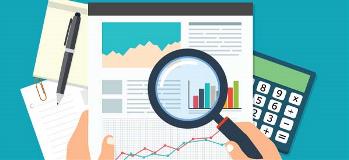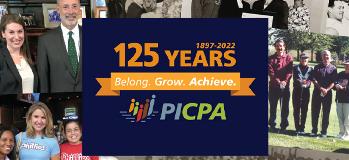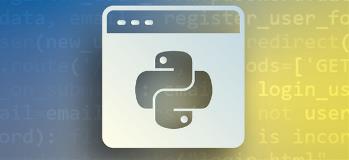Summer 2022
Features
Blazing New Trails in Public Accounting through Social Entrepreneurship
By J. C. Blewitt, PhD, and Rebecca Kinzinger, CGFM
Social entrepreneurship efforts tend to be industry-specific and lean on professional practices to enact valuable changes. This feature weighs how public accounting can adopt social entrepreneurship through an analysis of two important industry stakeholders: firms and millennials.
Inflation: What’s Behind It and What’s to Come
By Nicholas A. Boyer
CPAs, in both public accounting and industry, are well-positioned to collect, measure, and interpret the financial data needed to navigate organizations through a potentially long inflationary period. Reevaluating operational cost structures, calculating unit cost for products sold and services provided, tracking changes in gross margins, and assisting with pricing strategies to maintain profitable operations are a few important ways CPAs can guide and support leaders and executives. This feature will help you identify and weigh the prospects of a potential inflationary period.
PICPA at 125 Years: Celebrating an Enduring Legacy, Building an Exciting Future
By Matthew McCann
On our 125th anniversary, the PICPA would like to share a few highlights from the past and some of our plans for how we will continue coming together to enhance the profession, serve the public, and work together to resolve common issues, big and small. Specifically, this feature looks at our membership, advocacy efforts, professional learning channels, the pipeline of new CPAs, and the profession’s reputation and ethics.
Get Comfortable Wrapping Yourself Around Python
By J. L. “John” Alarcon, CPA, CGMA, CITP, Kevin C. Moffitt, PhD, and Cory Ng, CPA, DBA, CGMA
As more tools become necessary for analyzing large and unstructured data sets in today’s digital environment, the open-source programming language Python has emerged as an important contributor to audits, internal audit, IT audit, business planning and forecasting, as well as traditional accounting roles. This feature explains why Python has gained popularity among financial professionals and discusses its relevance to CPAs.
Columns

Employee Benefit Plans
Identifying and Communicating Reportable Findings
By Richard F. Fischer, CPA, CGMA
Breaks down reportable findings related to SAS No. 136, including how to identify and communicate them to prevent major deficiencies in audits of ERISA plan financial statements.
Legislative News
PICPA’s Pivotal Role in Addressing Federal Tax Issues
By Alexandra C. Fabian
Explains PICPA’s response to IRS service and staff issues and how it continues to work with the AICPA and Congress on relief for taxpayers and practitioners.

Business & Industry
The Finance Department: Make It a Place Where Everybody Knows Your Name
By Michael F. De Stefano, CPA
What if colleagues shouted your name every time you entered the office? You’d probably feel a lot like Norm Peterson in the classic TV comedy series Cheers. Having rewatched the show recently, I began to see parallels with the functionality of a modern finance or accounting department.

Business Succession Planning
How to Prepare a Business for Strategic Sale
By John S. Stoner, CPA, CVA
Discusses the interests of selling a business strategically and the questions to ask when assessing how the firm may appeal to an external buyer.

Business Transformations
The Convertible Debt Interest Disallowance Dilemma
By James P. Swanick, CPA, Meredith Thornton, CPA, and Michael J. Tighe, CPA
Discusses how borrowers who use convertible debt as a financing option need to understand the rules that could limit the tax benefits of this instrument.

Careers & Lifestyles
Has the Great Resignation Altered Your Retention Plans Yet?
By Alyzabeth R. Smith, CPA
Discusses how financial service firms were affected by the Great Resignation and how they can chart a path forward to bolster their retention efforts.

Federal Tax
Avoiding Errors in Establishing Basis in Business Interests
By Mark L. Lubin, CPA, JD, LLM
Discusses the best practices to determine tax basis of interests in business entities, including C corporations, S corporations, and partnerships while avoiding crucial errors.

Personal Financial Planning
Solicitor Agreements Are Key to CPA, Wealth Adviser Team Ups
By Angie M. Stephenson, CPA, PFS, CFP, and Thomas D. Giachetti, JD
Discusses how solicitor agreements can help CPA firms that - due to compliance complexities and independence parameters - chose to work with a wealth adviser on client matters.

Liability Lessons
Your Greatest Malpractice Risks and How to Mitigate Them
By Lauren Pitonyak
Explains that simple, everyday tasks can expose CPAs to malpractice litigation, but offers ways to mitigate the risks.

Forensic Accounting
Protecting Trade Secrets in a Remote Work Environment
By David Duffus, CPA, ABV, and CFF
Discusses how a recent court decision in Pennsylvania has shed light on how businesses can protect trade secrets in a remote work environment.

State & Local Tax
Pennsylvania Local Tax Implications of Remote Work
By Matthew Melinson, CPA, Narj Bhogal, CPA, Patrick Skeehan, JD, and Thomas Boyle, JD
Covers the additional risks businesses face as remote work arrangements continue to become more commonplace.





